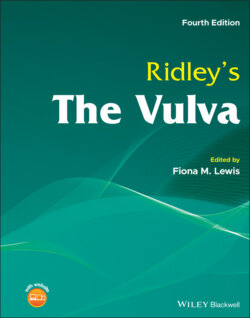Читать книгу Ridley's The Vulva - Группа авторов - Страница 146
CHAPTER MENU
ОглавлениеBiopsy Reasons for taking a biopsy Site of biopsy Pre-biopsy Types of biopsy Punch biopsy Incisional biopsy Elliptical biopsy Excisional biopsy Shave biopsy Local anaesthesia Technique Post-biopsy instructions Samples Documentation What do you need to tell the pathologist?
Microbiological investigation Swabs Scrapings Serology Wet mount microscopy
With some clinical presentations, the diagnosis can be made on the basis of the history and examination alone. However, investigations may be necessary to confirm the clinical diagnosis and to gain further information in order to formulate an appropriate management plan. These investigations need to be tailored to the clinical features, as performing extensive investigations without a clinical differential diagnosis is never helpful.
With any investigation, there must be good communication with the laboratory and the appropriate specialist, particularly with the histopathologist as clinicopathological correlation is crucial. If infection is suspected, special tests are often required, which may need specific collection techniques and transport media. This will require discussion with microbiology specialists and the local laboratory before taking specimens.
